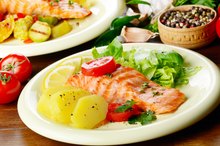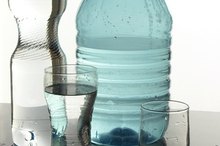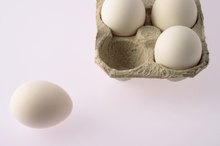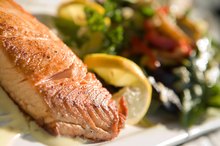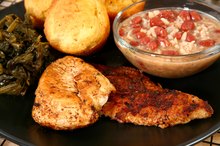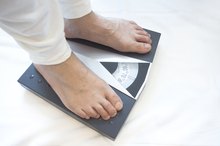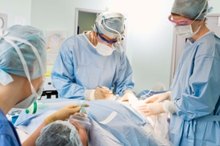What does fact checked mean?
At Healthfully, we strive to deliver objective content that is accurate and up-to-date. Our team periodically reviews articles in order to ensure content quality. The sources cited below consist of evidence from peer-reviewed journals, prominent medical organizations, academic associations, and government data.
The information contained on this site is for informational purposes only, and should not be used as a substitute for the advice of a professional health care provider. Please check with the appropriate physician regarding health questions and concerns. Although we strive to deliver accurate and up-to-date information, no guarantee to that effect is made.
USDA Recommendations of Protein in Diet
Adequate dietary intake of protein is necessary for the body to sustain and repair itself. According to the Institute of Medicine's Food and Nutrition Board, 10 to 35 percent of calories should come from protein, and 2005-2006 National Health and Nutrition Examination Survey showed most Americans are consuming more than enough. On average women are consuming about 152 percent and men almost 182 percent of the recommended dietary intake.
About Protein
The human body is made up of trillions of cells, each of which contains protein. A combination of 20 different amino acids can make up a protein. Some amino acids can be made in the body but some, considered "essential" amino acids, must be included in the diet. Protein foods that provide all of the essential amino acids are considered complete proteins, and those that lack essential amino acids are called incomplete proteins. Incomplete proteins are found in plant-based foods, such as:
- poultry
- eggs
- fish
- dairy products
- meat
- The human body is made up of trillions of cells, each of which contains protein.
- Some amino acids can be made in the body but some, considered "essential" amino acids, must be included in the diet.
Protein's Role in the Body
Diet for Handicapped or Bedridden People
Learn More
Proteins are the building blocks of life, and the body needs them to repair and maintain itself. During periods of rapid growth, such as pregnancy, childhood and puberty, protein plays a major role in development.
RDAs for Protein
The amount of protein needed by the body can differ based on age, sex and activity level. The recommended dietary allowance for adults over the age 18 is 0.8 grams per kilogram of body weight per day. Each pound is equal to 2.2 kg, meaning that a 150-pound person weighs about 68 kilograms. Therefore, a 150-pound person needs to get about 54 grams of protein per day to meet his or her needs.
- The amount of protein needed by the body can differ based on age, sex and activity level.
- Therefore, a 150-pound person needs to get about 54 grams of protein per day to meet his or her needs.
Protein Needs for Athletes
How Many Milliliters of Water Should You Drink a Day?
Learn More
For athletes, protein needs may be increased. Needs will vary based on age, sex, amount of activity, body size and fitness level. For endurance athletes, protein intake of 1.2 to 1.4 grams per kilogram per day is recommended, while strength athletes may need 1.2 to 1.7 grams per kilogram per day. For example, a 150-pound endurance athlete may need 82 to 95 grams of protein per day.
- For athletes, protein needs may be increased.
- For example, a 150-pound endurance athlete may need 82 to 95 grams of protein per day.
Dietary Sources of Protein
To optimize nutritional health, aim to include a variety of these protein sources in your diet 4.
Related Articles
References
- USDA ChooseMyPlate.gov: Protein Foods
- USDA Agricultural Research Service: Table 2 Nutrient Intakes from Food: Mean Amounts and Percentages of Calories from Protein, Carbohydrate, Fat, and Alcohol, One Day, 2005-2006
- MedlinePlus: Protein in diet
- Krause's Food and Nutrition Care Process, Nutrition in Exercise and Sports Performance; L. Kathleen Mahan et al.
- None
- None
- None
- None
- None
- None
- None
- None
- None
- None
- None
- None
- None
- None
- None
- None
- None
- None
- None
- None
- None
- None
- None
- None
- None
- None
- None
- None
- None
- None
Writer Bio
Renae Brinkman is a registered and licensed dietitian and holds a Bachelor of Science from Purdue University in dietetics and nutrition, fitness and health. Brinkman has a passion for health promotion and disease prevention and has written numerous educational materials and articles on nutrition, fitness and health for health and wellness organizations in the Nashville area.
